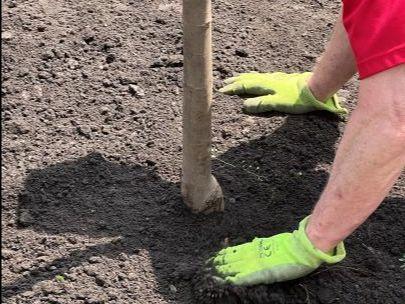Experts discuss the process of developing hardiness map for 2023
A newly updated version of the Plant Zone Hardiness Map, a key resource that informs the planting decisions of gardeners and growers across the country, was recently released by the United States Department of Agriculture. The new map provides a more precise picture of the average annual minimum temperature conditions across the state thanks to GIS technology.
According to Aaron Steil, consumer horticulture specialist with Iowa State University Extension and Outreach, it shows an average temperature shift of about one-quarter zone (about 2.5 F), placing more of the state in zone 5.
In this article, experts with ISU Extension and Outreach discuss the change and provide insight into what it means.
2023 Update
Using data from thousands of monitoring stations across the United States, the map is put together as a standard reference for a plant’s cold tolerance. The map uses data from the past 30 years, which has been reviewed by horticultural, botanical and climatological experts to reflect average coldest winter temperatures and smooth out year-to-year fluctuations.
“The map indicates the average lowest temperature for a particular region, which is really helpful in selecting the right kind of plant for your garden,” explained Steil. “It’s been around for many years and is updated on a regular basis as things change over time.”
While much of Iowa remains in zone 5, some areas of the state did see a shift in classification between 2012 and 2023. “Previous to the 2023 release, there were still large chunks of the state in northwest and northeast Iowa that were zone 4B. Now, essentially the bulk of the state is either zone 5A or 5B, with only small pockets of northeast and northwest Iowa in zone 4B. In addition, three or four counties in southeast and southwest Iowa are now in zone 6A, which is definitely a change,” Steil said.
According to the USDA, another big change in the 2023 version is that the updated map includes more precise data, which can better account for complicating factors, such as elevation and large bodies of water, which can influence temperature.
While the USDA’s Plant Zone Hardiness Map is a reliable and research-backed resource, Steil reminds gardeners that the temperature ranges it lists serve as an average lowest temperature, and it is still possible for temperatures below those listed to occur, especially in more extreme years.
“The map simply tells you what the average lowest temperature for a given area is,” explained Steil. “That doesn’t mean it can’t get below a certain temperature; it just means that in a typical year it won’t.”
2012 Update
The first major update to the map occurred in 2012, following feedback from researchers, horticulturists and representatives from the nursery industry. Mark Widrlechner, affiliate associate professor of horticulture at Iowa State, was instrumental in the development of the 2012 map, and assisted with the 2023 update.
“In my time at the North Central Regional Plant Introduction Station, one of my main tasks was to coordinate a regional testing program for new trees and shrubs,” said Widrlechner. “The plant introduction station is part of a network of long-term trial sites that plant new trees and shrubs and report on how they perform. As I compiled the data from that program, it was obvious that climate was a really important determinant of plant survival for trees and shrubs, so I ended up working with other researchers to publish scientific papers about what I was seeing.”
Having published papers on what he was observing with climate, he was known within the USDA Agriculture Research Services as a person who was studying the relationship between climate and tree and shrub performance.
“When it was decided that the 1990 map needed to be updated, I was approached by the USDA administration to chair a national technical review team,” he said.
In addition to assisting with the 2012 map, Widrlechner also served as a resource in the development of the 2023 map. “I’ve been retired from the USDA for 12 years now, but when they decided that they were going to update the map for 2023, they asked me if I was interested in participating in a new review team, so I provided some insight based on my experiences working on the 2012 map,” added Widrlechner.
Developing a Protocol
As Widrlechner explained, because an outside contractor was hired for the development of the 1990 map, the 2012 team had very little insight into how the 1990 map had been created. “It was clear that no one knew the protocol that was used to make the map, so in developing the 2012 map, we decided to create something more scientific and repeatable,” he said.
As Widrlechner and the other researchers worked on the 2012 map, they discovered that they were lacking some of the sophisticated mapping methods that would be needed for the updated map. This led to collaboration with a team at Oregon State University, who also partnered with the USDA in producing the 2023 version.
“We were attempting to do all of the work in house, but what we were putting together didn’t seem good enough,” explained Widrlechner. “So we decided to consult with some experts, which turned into a really good relationship with Oregon State University. I had a wonderful experience working with them the first time I was involved, so I was happy to work with them again in developing the 2023 map.”
To access the USDA Plant Zone Hardiness Map, visit the USDA website. For more information on the USDA Plant Zone Hardiness Map, visit the Home and Horticulture Pest News Website.

Comments
Submit a CommentPlease refresh the page to leave Comment.
Still seeing this message? Press Ctrl + F5 to do a "Hard Refresh".